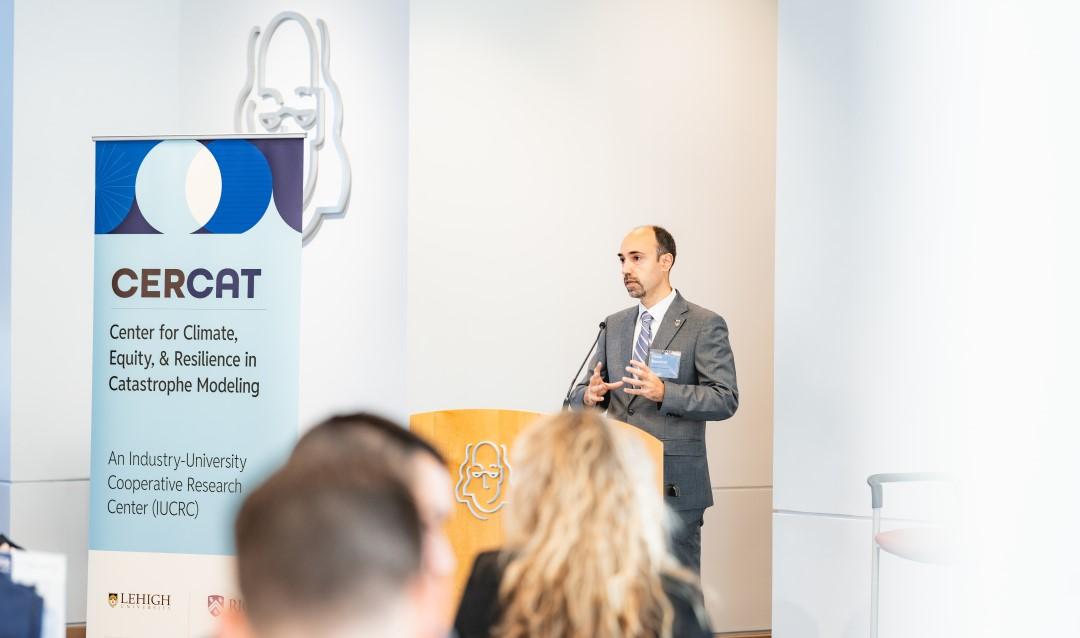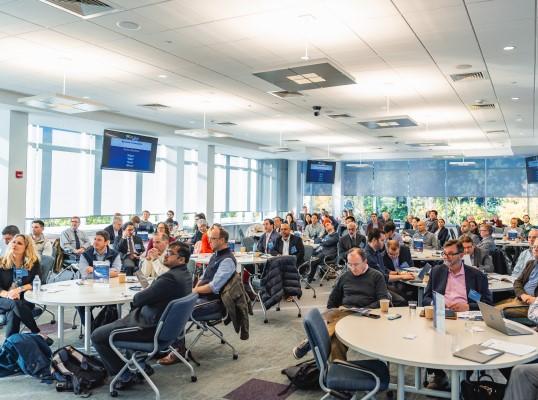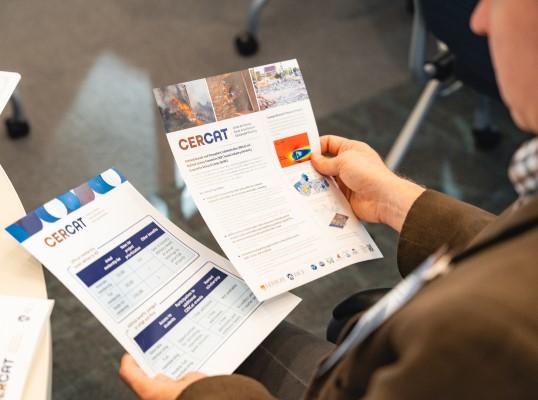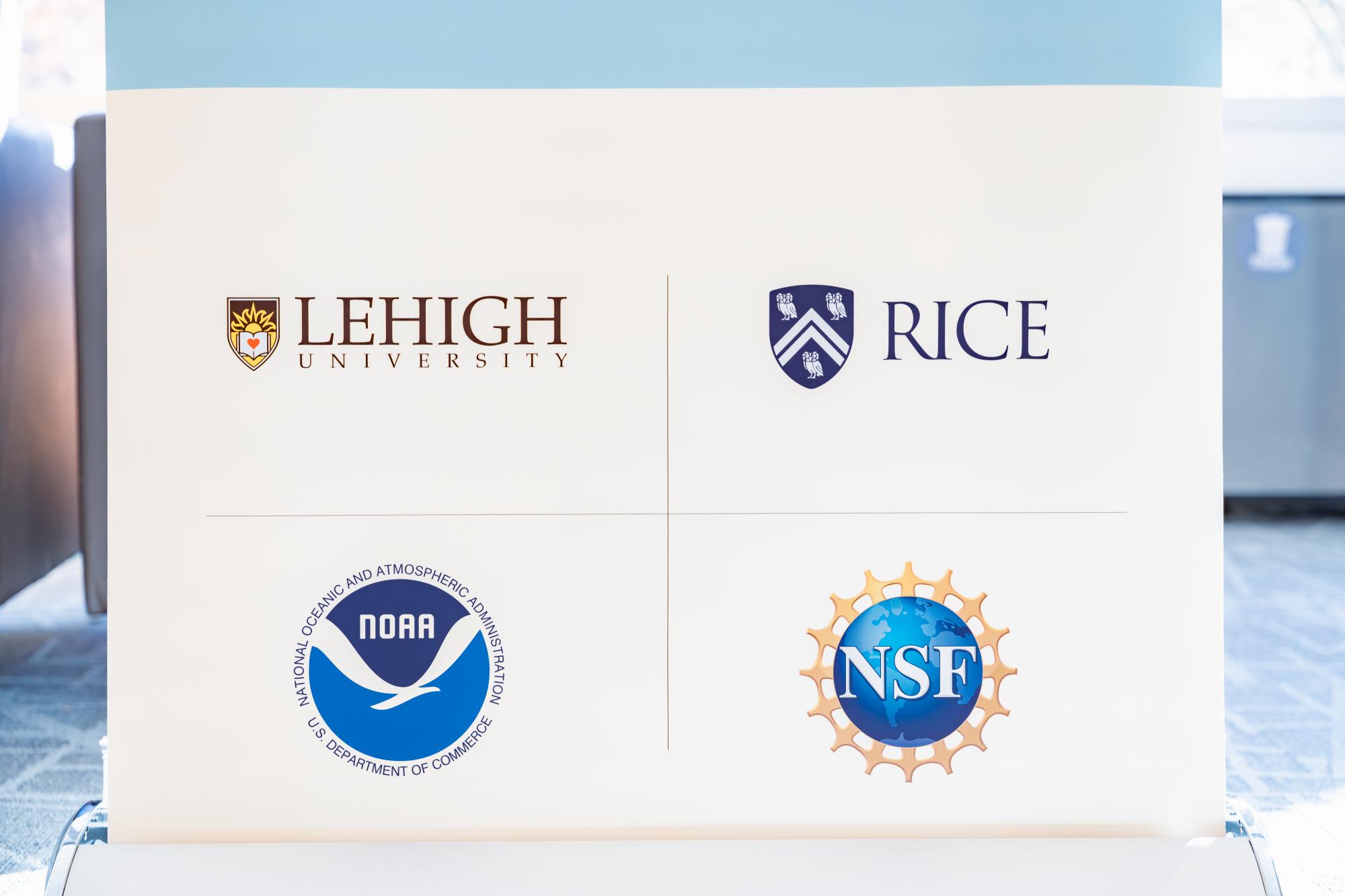“There were some connections, but they were mostly individual faculty who were reaching out or were approached by the insurance sector on this topic, and so we set out to work and create that connection, that center that could facilitate these kinds of interactions,” he said.
The Lehigh/Rice team was inspired to apply for the IUCRC grant after a workshop in New York City in March 2023 attended by 50 key stakeholders from academia, industry and government.
“We felt like we were skating toward where the puck was going. We already had the momentum, and we wanted to really bring it home,” Bocchini told the crowd gathered at Ben Franklin. “So we went through the selection process … and today we’re here to clear the last major hurdle, and that is to secure partners. We are very excited by the turnout and quality of people who are here.”
CatModeling and the Benefits of an IUCRC
Catastrophe Modeling, or CatModeling, attempts to predict the likelihood of potentially catastrophic events, such as natural disasters, pandemics, financial crises, as well as political unrest and the associated consequences, including casualties, financial losses, damage to buildings and other infrastructure.
CatModeling is particularly important for insurance companies who often cover the cost of disasters. The speed with which insurers can make payments can impact the long-term recovery of a region. Despite the importance of CatModeling, the field has not previously been treated as a traditional discipline explored systemically in academia. It can benefit from stronger collaborations with the fundamental and interdisciplinary research done in academia.
The NSF grant supports the vision of a single, interinstitutional center that gives stakeholders access to scholars with a rich portfolio of experience. Once the IUCRC is established, partner institutions are expected to contribute by appointing a representative to serve on the advisory board and participate in annual board meetings to prioritize projects, offer strategic advice for the coming year and provide an annual financial contribution. Because of these contributions, the NSF grant could raise more than $10 million over 10 years for the center.
“What we do is we bring universities and industry together, where the universities provide research infrastructure, human capital and expertise that you may not have in-house, or to augment what you do have in-house,” said Barbara Ransom, NSF cognizant program director.
There are 75 IUCRCs at 117 universities across the United States, according to the NSF. One of the benefits of such centers is access to talented students. As a result of these centers, more than 3,000 students have been hired by IUCRC member companies to date, says the organization.
“It’s really an engine of innovation for industry that helps you bring new ideas and new ways of thinking about projects, and delivers gap-filling knowledge for you so that you can move forward,” Ransom said.
Proposed Research
The scholars at Lehigh and Rice bring expertise in hazard characterization, climate change, infrastructure modeling, applied data science, scenario selection, community-level aspects of disasters and probabilistic modeling.
On Thursday, faculty from both universities presented 10 research topics proposed for the center and held breakout sessions to discuss them with prospective partners. On Friday, attendees participated in a voting session, similar to how voting would work in an IUCRC.
The project that received the most interest was, “Quantifying uncertainties in tropical cyclone hazard projections across spatial scales.” This project will develop a multi-scale framework to diagnose, quantify and propagate uncertainties across and within tropical cyclone (TC) models to improve local-scale, multi-hazards risk estimates. Other presented projects included: "Multi-Hazard Impact, Risk and Resilience Assessment of Supply Chain Routes,” and a project on "Multi-modal Damage Assessment in Post-Disaster Scenarios with AI and Remote Sensing.”








